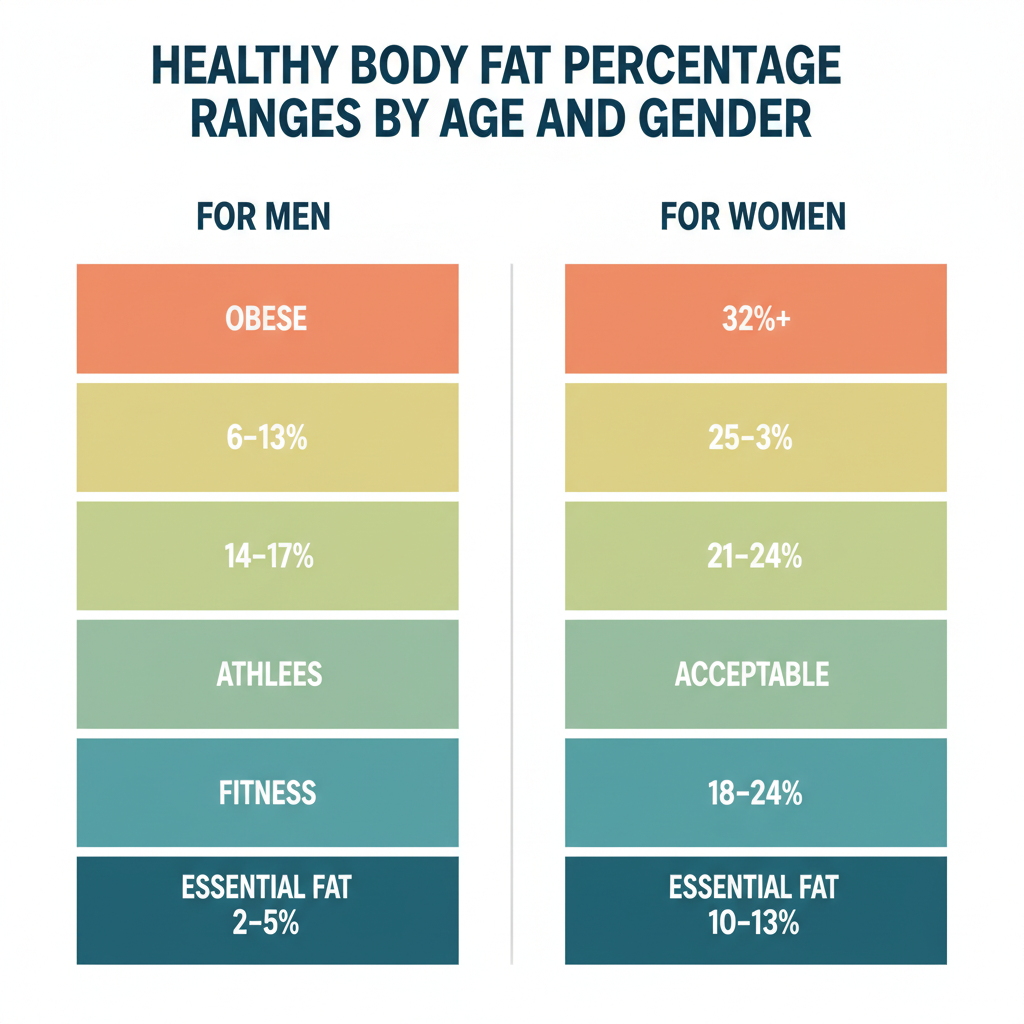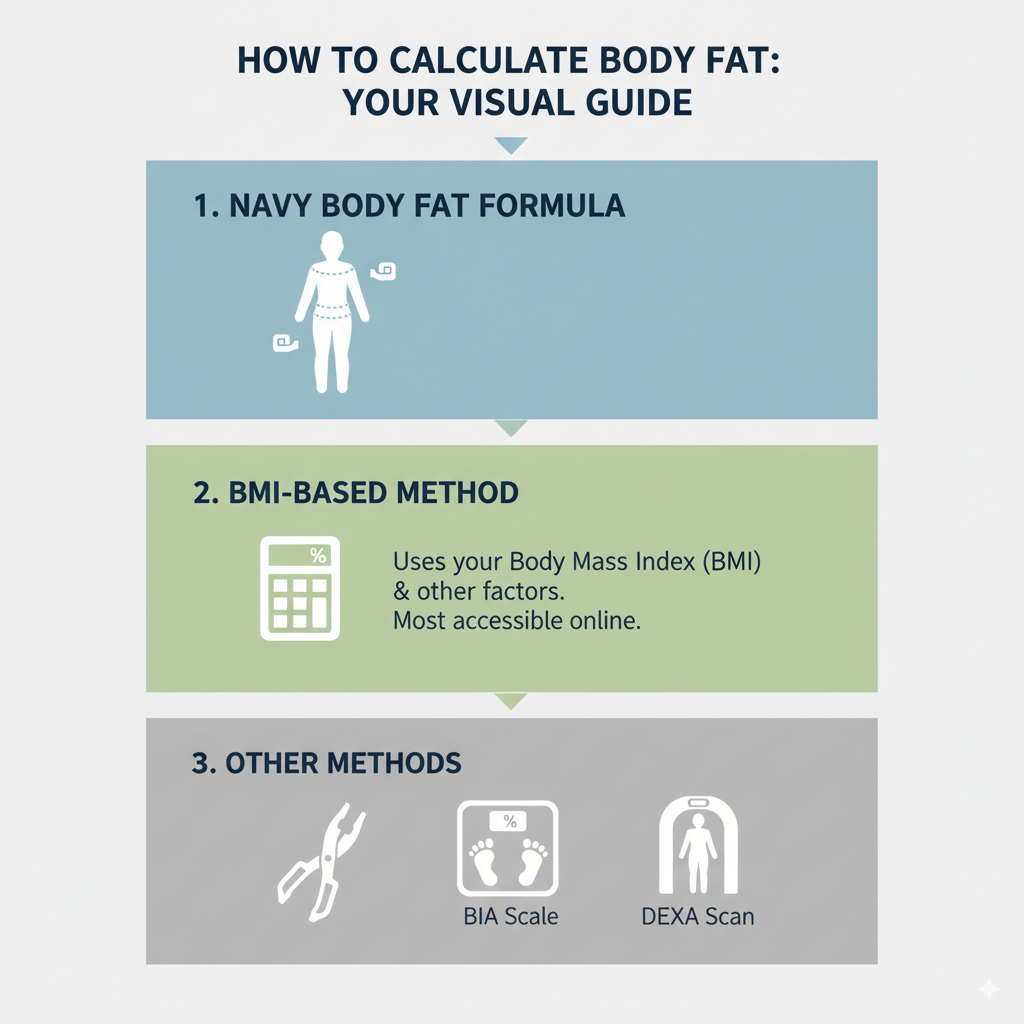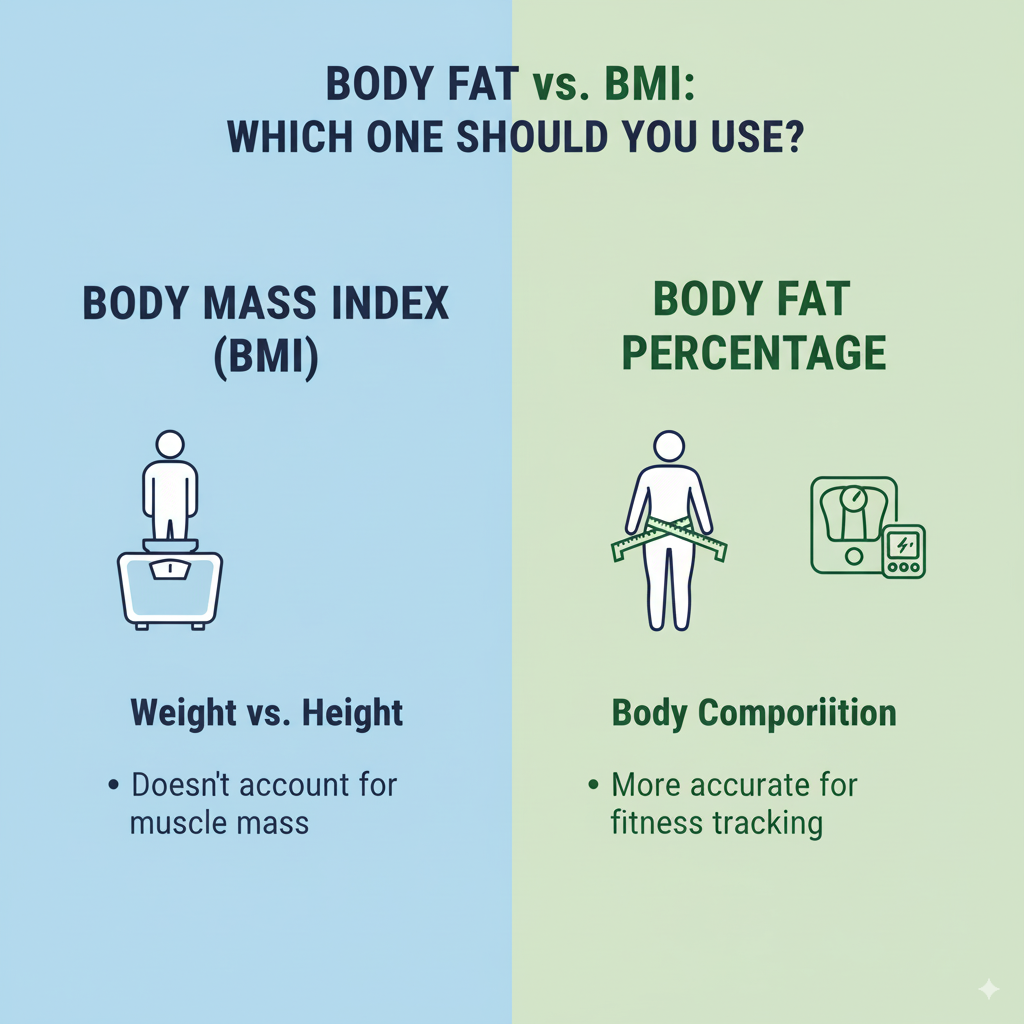Body Fat Calculator
Unit converter or other calculators can go here.
Explore other calculators
You can check our other calculators to calculate different things.
Understanding and Using the Body Fat Calculator NHS
The Body Fat Calculator NHS is a trusted online tool for measuring body composition more accurately than weight alone. It estimates your body fat percentage by analyzing key health metrics, offering a clearer picture of your fitness and long-term health risks. Unlike a standard scale that only shows total mass, the calculator highlights the balance between fat, muscle, and other tissues. NHS guidance recommends tracking body fat alongside indicators like BMI and waist-to-hip ratio to reduce the risk of conditions such as heart disease, type 2 diabetes, and high blood pressure. By using this calculator, individuals can set precise goals for weight management, muscle gain, or improved cardiovascular health.
What Is Body Fat?
Body fat, also called adipose tissue, serves many essential purposes in the human body. It acts as an energy reserve, insulates and cushions organs, and helps regulate hormones. However, the balance is crucial. Too much or too little body fat can lead to health problems.
Body fat is generally categorized into two types:
Essential fat: This is necessary for normal bodily functions and is found in vital organs, bone marrow, and the nervous system. It plays a role in hormonal balance and reproductive health.
Storage fat: This is the fat that accumulates under the skin (subcutaneous fat) and around internal organs (visceral fat). While some storage fat is needed, excess amounts can lead to health complications.

Why Use a Body Fat Calculator NHS?
Using a Body Fat Calculator NHS helps you determine if your body fat levels fall within a healthy range. This tool considers factors like age, sex, height, and weight to estimate body fat percentage. It’s an excellent starting point for anyone curious about their physical health or planning a new fitness regimen.
Unlike body weight, which can be influenced by muscle mass, water retention, and bone density, a Body Fat Calculator NHS focuses on body composition. This makes it a more accurate tool for identifying obesity or evaluating progress in fitness training.
Healthy Body Fat Percentage Ranges
Healthy body fat levels vary depending on gender and age. Here’s a general guide:
For Men:
Essential fat: 2-5%
Athletes: 6-13%
Fitness: 14-17%
Acceptable: 18-24%
Obese: 25% or more
For Women:
Essential fat: 10-13%
Athletes: 14-20%
Fitness: 21-24%
Acceptable: 25-31%
Obese: 32% or more
Maintaining a healthy body fat percentage is crucial for overall health. Excess fat, particularly visceral fat, is linked to conditions like heart disease, type 2 diabetes, and certain cancers.

How to Calculate Body Fat
There are several ways to estimate body fat, and one of the most accessible is using a Body Fat Calculator NHS. Here are the most common methods:
1. Navy Body Fat Formula
This method uses body measurements to estimate fat percentage.
For Men: Measure waist and neck circumference.
For Women: Measure waist, hip, and neck circumference.
The calculator then uses these figures to generate an estimated body fat percentage.
2. BMI-Based Method
The Body Mass Index (BMI) can also be used to estimate body fat, although it is not always accurate, especially for muscular individuals.
Formula for men: BFP = 1.20 × BMI + 0.23 × Age – 16.2
Formula for women: BFP = 1.20 × BMI + 0.23 × Age – 5.4
While not as precise as direct methods, BMI is still widely used due to its simplicity.
If you’re curious about how to calculate body fat without fancy equipment, these two approaches are easy and effective.
Tools and Technologies for Measuring Body Fat
In addition to online calculators, other tools and methods include:
Skinfold calipers: Measure fat thickness at specific points on the body.
Bioelectrical Impedance Analysis (BIA): Sends a weak electrical current through the body to estimate fat percentage.
DEXA scans: Highly accurate, but typically only available at medical facilities.
Hydrostatic weighing: An old but precise method that involves underwater weighing.
However, for most people, a Body Fat Calculator NHS is the easiest and most accessible option.
Importance of Knowing Your Body Fat Percentage
Knowing your body fat percentage can:
Help you set realistic fitness goals.
Monitor the effectiveness of a workout or diet.
Detect unhealthy levels of fat even when your weight appears normal.
Improve athletic performance by optimizing lean mass.

Using the Body Fat Calculator NHS Effectively
To get the most accurate results from your Body Fat Calculator NHS, follow these tips:
Take measurements in the morning before eating or drinking.
Use a flexible tape measure.
Avoid tensing your muscles or sucking in your stomach.
Take multiple measurements and average them for consistency.
Remember, consistency is key. Always measure under the same conditions for reliable tracking.
Factors That Affect Body Fat Percentage
Understanding what influences body fat helps you make better health choices. Factors include:
Genetics: Some people are naturally predisposed to store more fat.
Diet: High-calorie, low-nutrient diets contribute to fat gain.
Physical activity: A sedentary lifestyle promotes fat accumulation.
Hormones: Hormonal imbalances can lead to increased fat storage.
Sleep and stress: Poor sleep and chronic stress raise cortisol levels, which may increase fat storage, especially in the abdominal area.
Risks of High Body Fat Percentage
Excessive body fat, especially visceral fat, is associated with:
High blood pressure
Type 2 diabetes
Heart disease
Stroke
Sleep apnea
Certain cancers
This is why understanding how to calculate body fat and staying within a healthy range is vital for long-term health.
Low Body Fat – Not Always Good
While high fat percentages are a concern, extremely low levels can be harmful, too. Essential fat supports brain function, hormone production, and insulation. Athletes and fitness enthusiasts should avoid dropping below healthy limits.
Body Fat Percentage Calculator vs. BMI
Although BMI is commonly used to determine health risks related to weight, it doesn’t account for muscle mass. A body fat percentage calculator gives a more accurate picture of body composition. For instance, a bodybuilder may have a high BMI but very low body fat.
If you’re using both tools, understand their limitations and strengths. The body fat percentage calculator shines where BMI falls short.
Monitoring Progress
Checking your body fat percentage regularly allows you to measure progress better than just looking at weight. For example, you might be losing fat and gaining muscle, which could keep your weight steady but reduce fat percentage.
When using a Body Fat Calculator NHS, track your readings weekly or biweekly to get a better overview of your fitness journey.
How to Reduce Body Fat Safely
If your Body Fat Calculator NHS shows a higher-than-recommended percentage, don’t panic. Here’s how to manage it:
Balanced Diet: Focus on whole foods, lean proteins, healthy fats, and complex carbs.
Regular Exercise: Include both strength training and cardio.
Adequate Sleep: Aim for 7-8 hours per night.
Hydration: Drink plenty of water throughout the day.
Stress Management: Practice relaxation techniques like meditation or yoga.
When to Consult a Health Professional
While the Body Fat Calculator NHS offers useful estimates, it’s not a diagnostic tool. If you have health concerns or are considering major changes to your fitness or diet routine, consult a healthcare provider for tailored advice.
Final Thoughts
The Body Fat Calculator NHS is a practical and user-friendly tool that can help you understand your body better. It’s a great way to begin your journey toward improved health, whether you’re working to lose fat, build muscle, or simply live a more balanced life.
Knowing how to calculate body fat gives you more control and clarity over your physical condition.
Combining the use of a body fat percentage calculator with a healthy lifestyle can help you stay in the best shape possible for years to come. With consistent effort and the right knowledge, you can achieve and maintain a body composition that supports both your physical appearance and your overall well-being.
